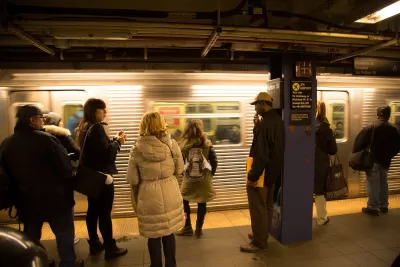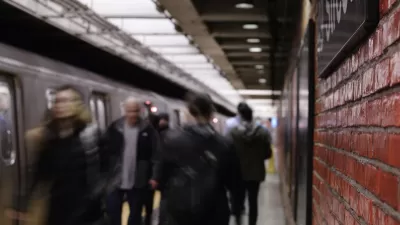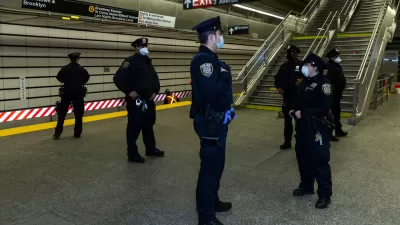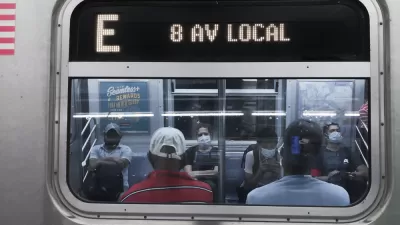Public transit systems in major U.S. cities are starting to focus on non-rush hour travelers as pre-pandemic commuting patterns shift and transportation needs change.

“The new normal for big-city transit agencies is the off-peak rider,” asserts Alissa Walker in Curbed. “The same numbers of people aren’t flooding into central business districts every weekday, but ridership for many agencies has surged on afternoons and weekends.”
Walker continues, “Existing MTA schedules specifically fail workers who have shift or service jobs that don’t follow nine-to-five commuting patterns, according to the ‘Round the Clock is the New Rush Hour’ report by the City Comptroller’s Office.”
These off-peak riders are the people the MTA had in mind when it announced a four-phase plan to increase off-peak service by 2024. The service expansion will start in July with weekend enhancements on three lines — G, J, M — selected because their ridership trends are already demonstrating faster recovery compared to elsewhere on the system.
On the question of whether improving off-peak service would help the agency’s struggling bottom line, Walker writes, “Transit expenditure expert Alon Levy estimates increasing MTA service to six minutes or less systemwide could increase ridership by 15 percent,” though that may not directly translate into higher revenue.
Making New York City transit faster, better, and safer is necessary but not sufficient for bringing back ridership and pulling the MTA back from its fiscal cliff. Walker notes that Gov. Hochul’s state budget also includes a new payroll tax slated to bring over $1 billion in new annual funding for the MTA, and $35 million dedicated to improving off-peak service.
FULL STORY: The Off-Peak Rider Is the Future of the Subway

Study: Maui’s Plan to Convert Vacation Rentals to Long-Term Housing Could Cause Nearly $1 Billion Economic Loss
The plan would reduce visitor accommodation by 25,% resulting in 1,900 jobs lost.

North Texas Transit Leaders Tout Benefits of TOD for Growing Region
At a summit focused on transit-oriented development, policymakers discussed how North Texas’ expanded light rail system can serve as a tool for economic growth.

Why Should We Subsidize Public Transportation?
Many public transit agencies face financial stress due to rising costs, declining fare revenue, and declining subsidies. Transit advocates must provide a strong business case for increasing public transit funding.

How to Make US Trains Faster
Changes to boarding platforms and a switch to electric trains could improve U.S. passenger rail service without the added cost of high-speed rail.

Columbia’s Revitalized ‘Loop’ Is a Hub for Local Entrepreneurs
A focus on small businesses is helping a commercial corridor in Columbia, Missouri thrive.

Invasive Insect Threatens Minnesota’s Ash Forests
The Emerald Ash Borer is a rapidly spreading invasive pest threatening Minnesota’s ash trees, and homeowners are encouraged to plant diverse replacement species, avoid moving ash firewood, and monitor for signs of infestation.
Urban Design for Planners 1: Software Tools
This six-course series explores essential urban design concepts using open source software and equips planners with the tools they need to participate fully in the urban design process.
Planning for Universal Design
Learn the tools for implementing Universal Design in planning regulations.
Ascent Environmental
Borough of Carlisle
Institute for Housing and Urban Development Studies (IHS)
City of Grandview
Harvard GSD Executive Education
Toledo-Lucas County Plan Commissions
Salt Lake City
NYU Wagner Graduate School of Public Service





























